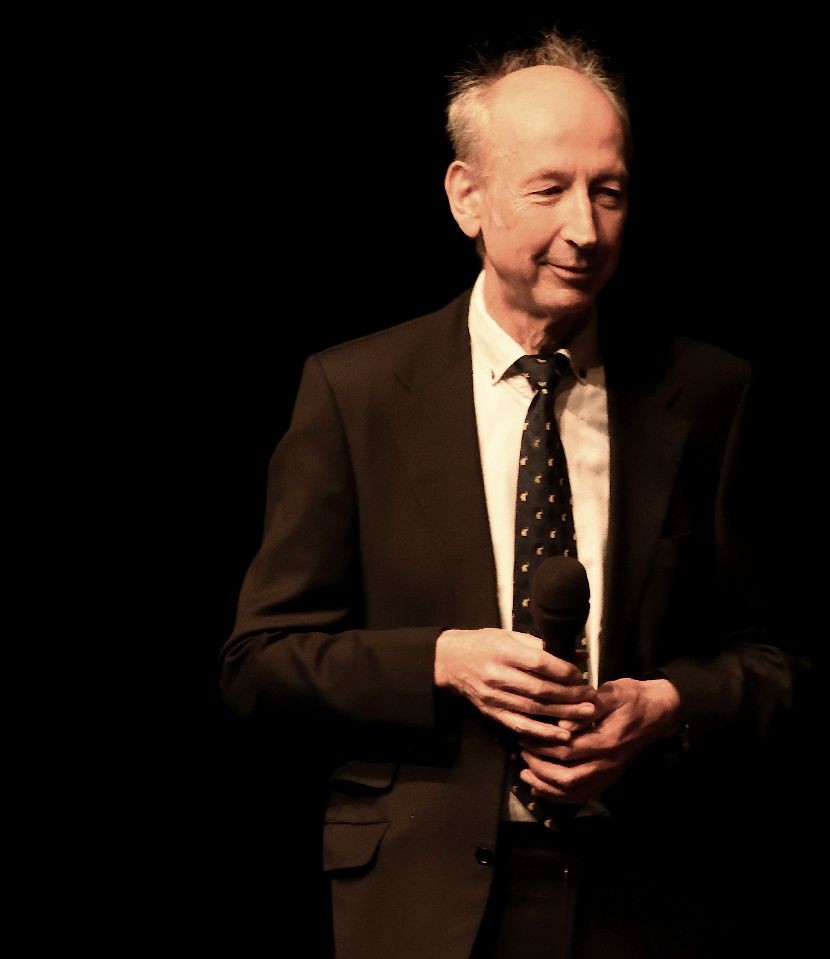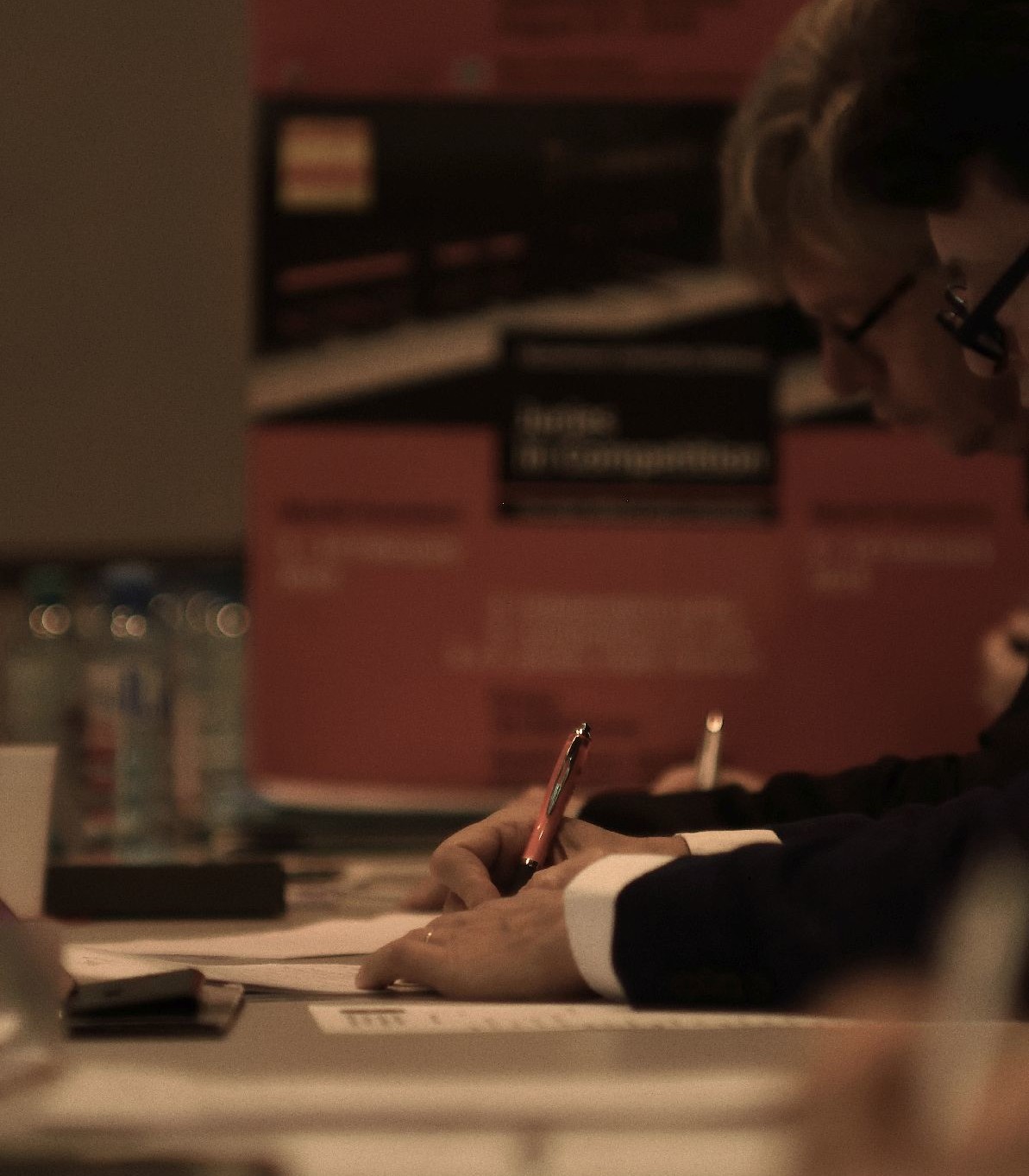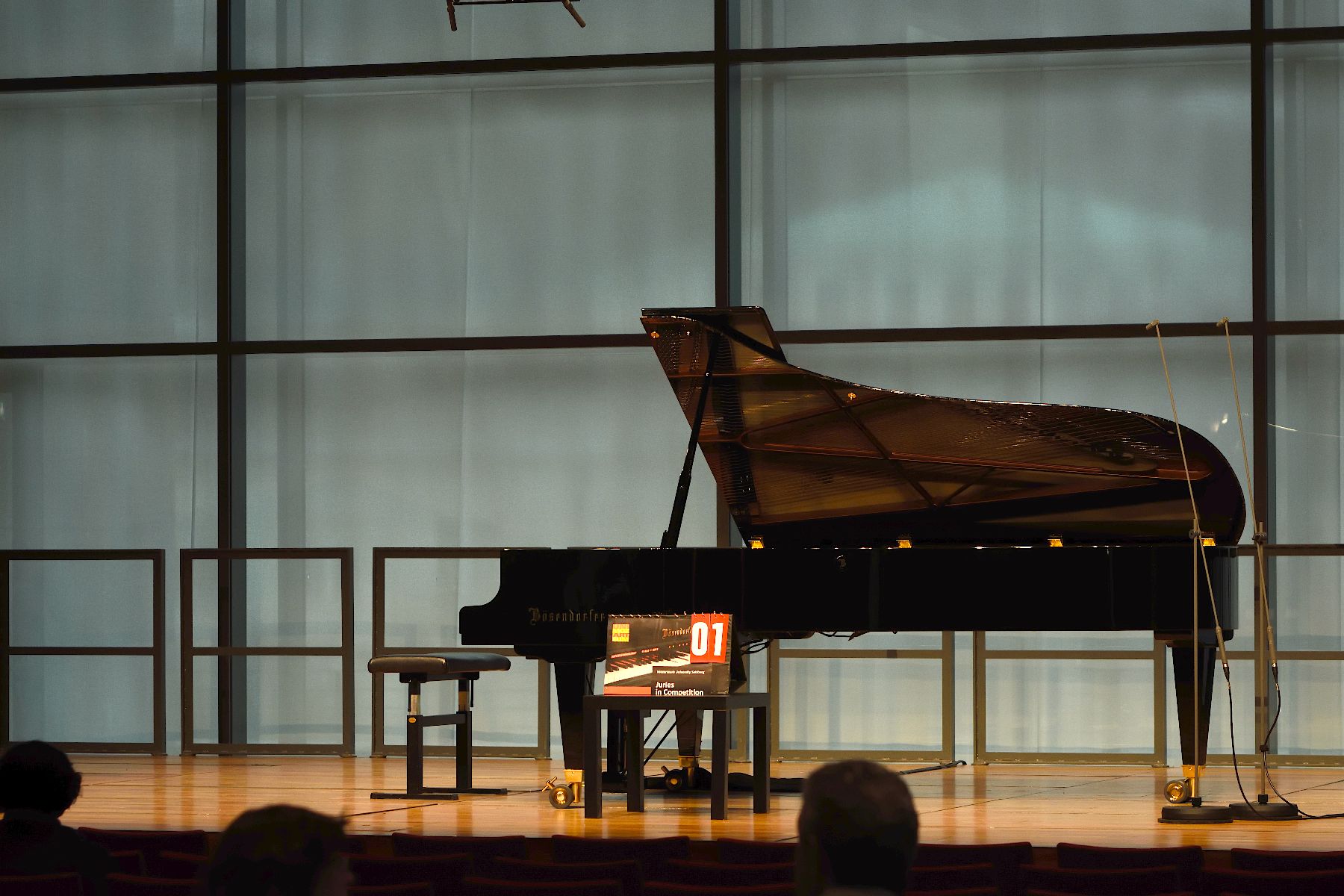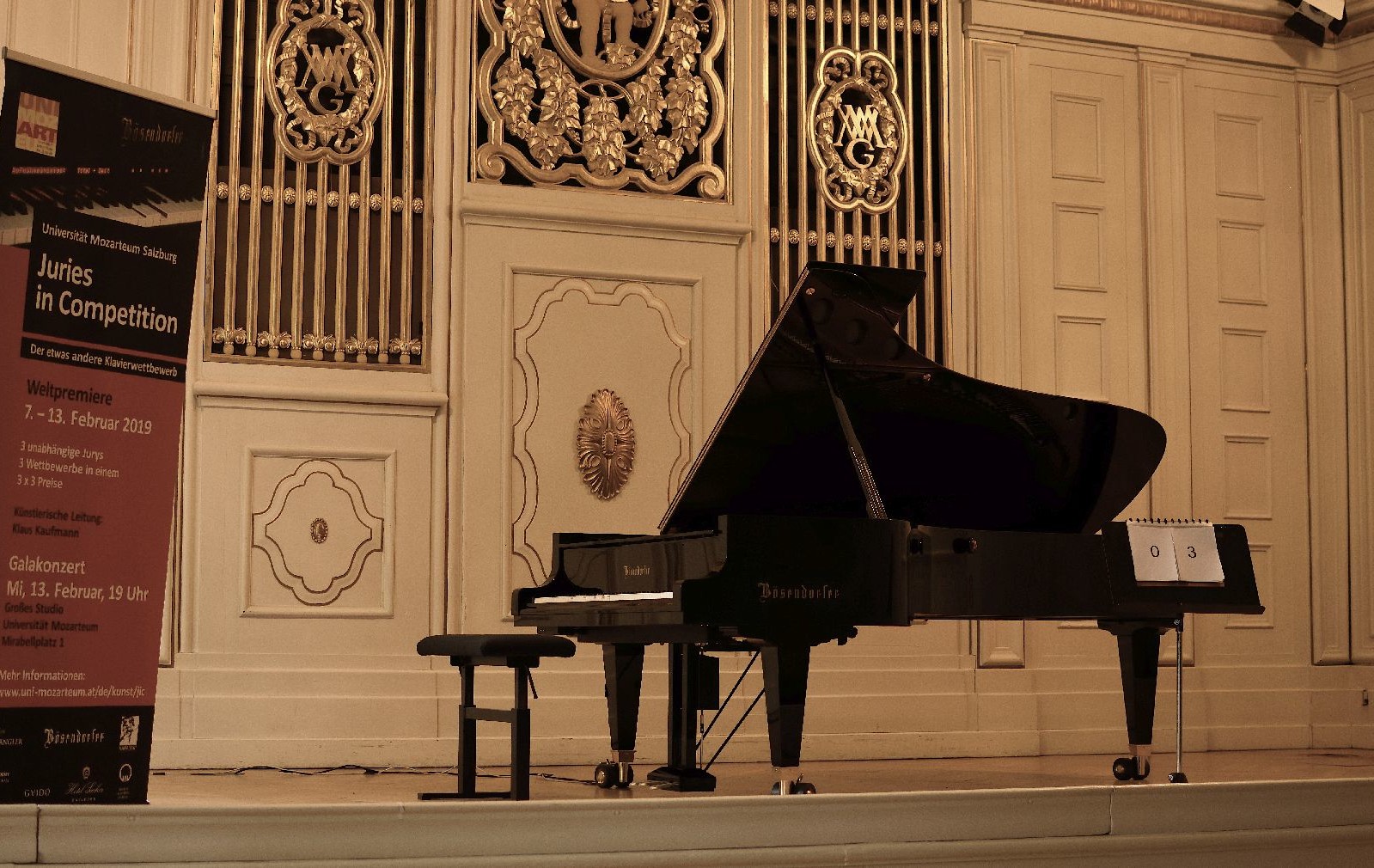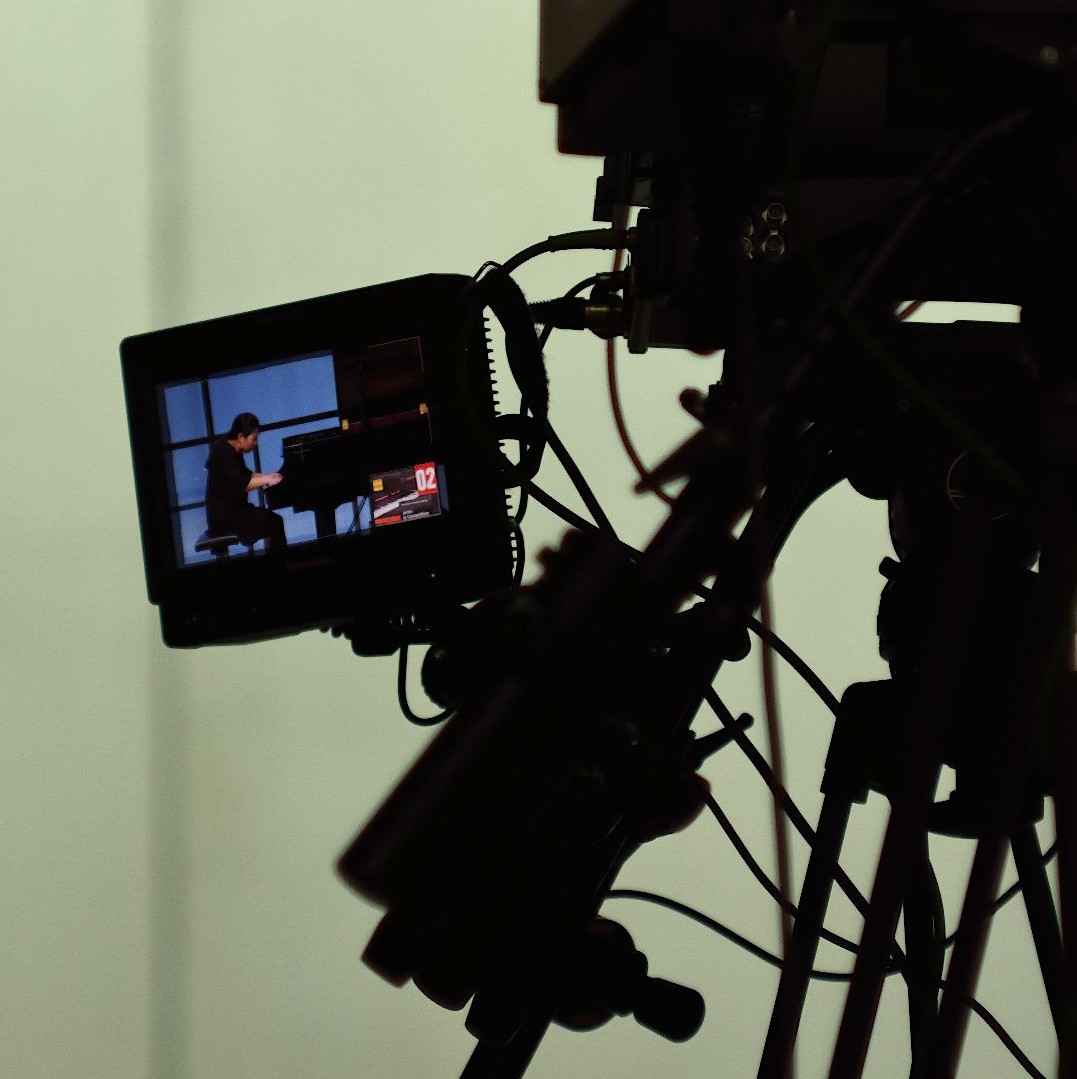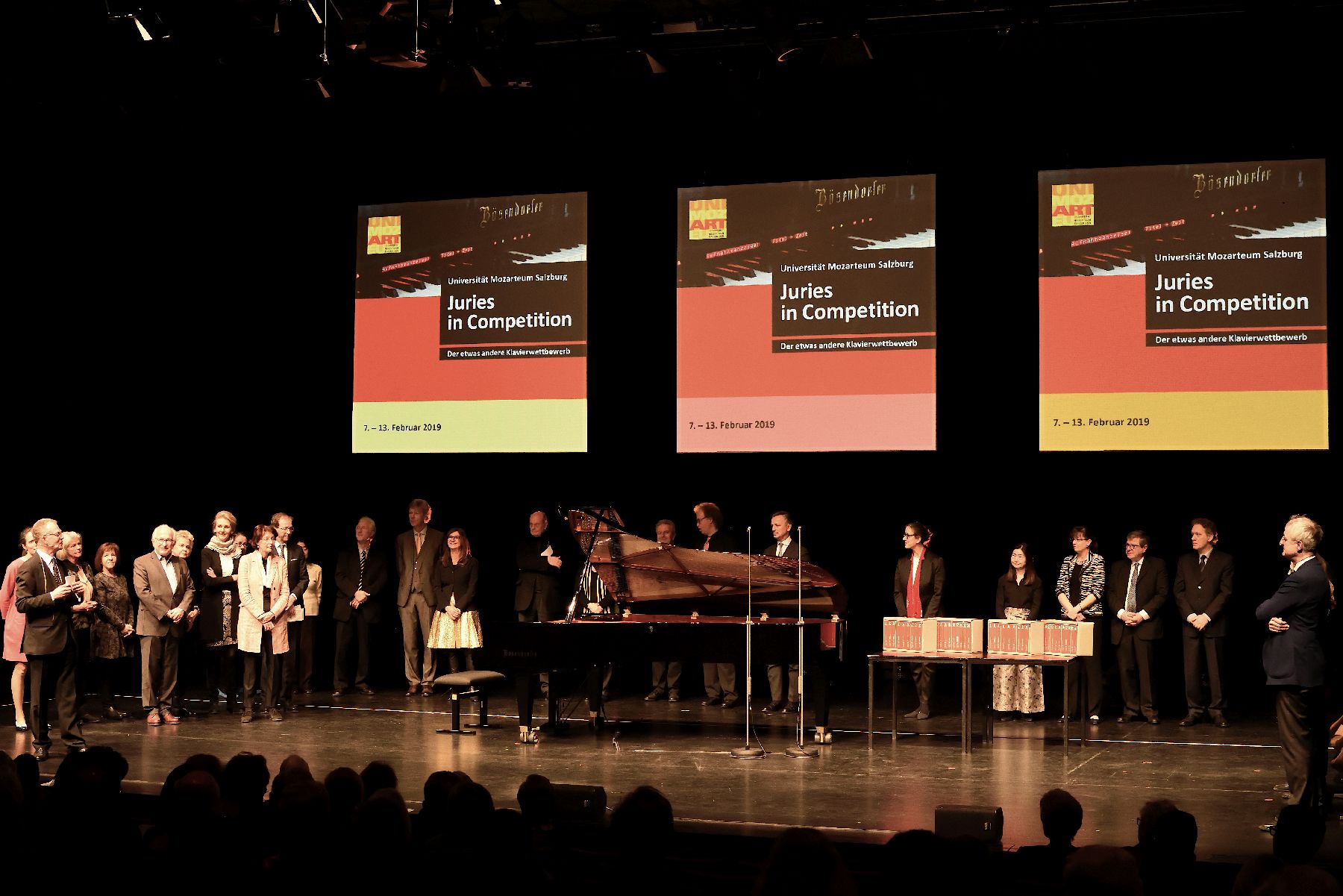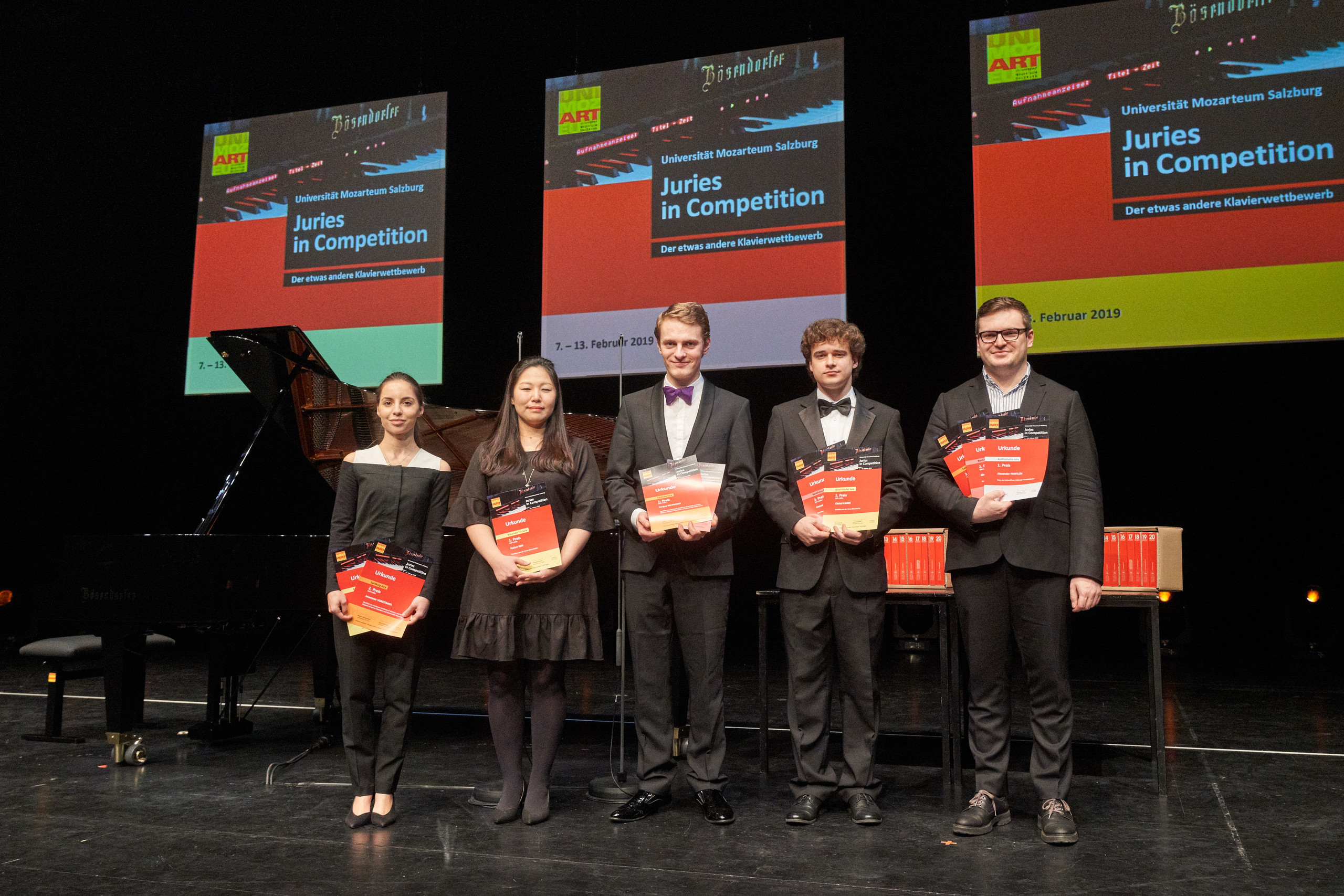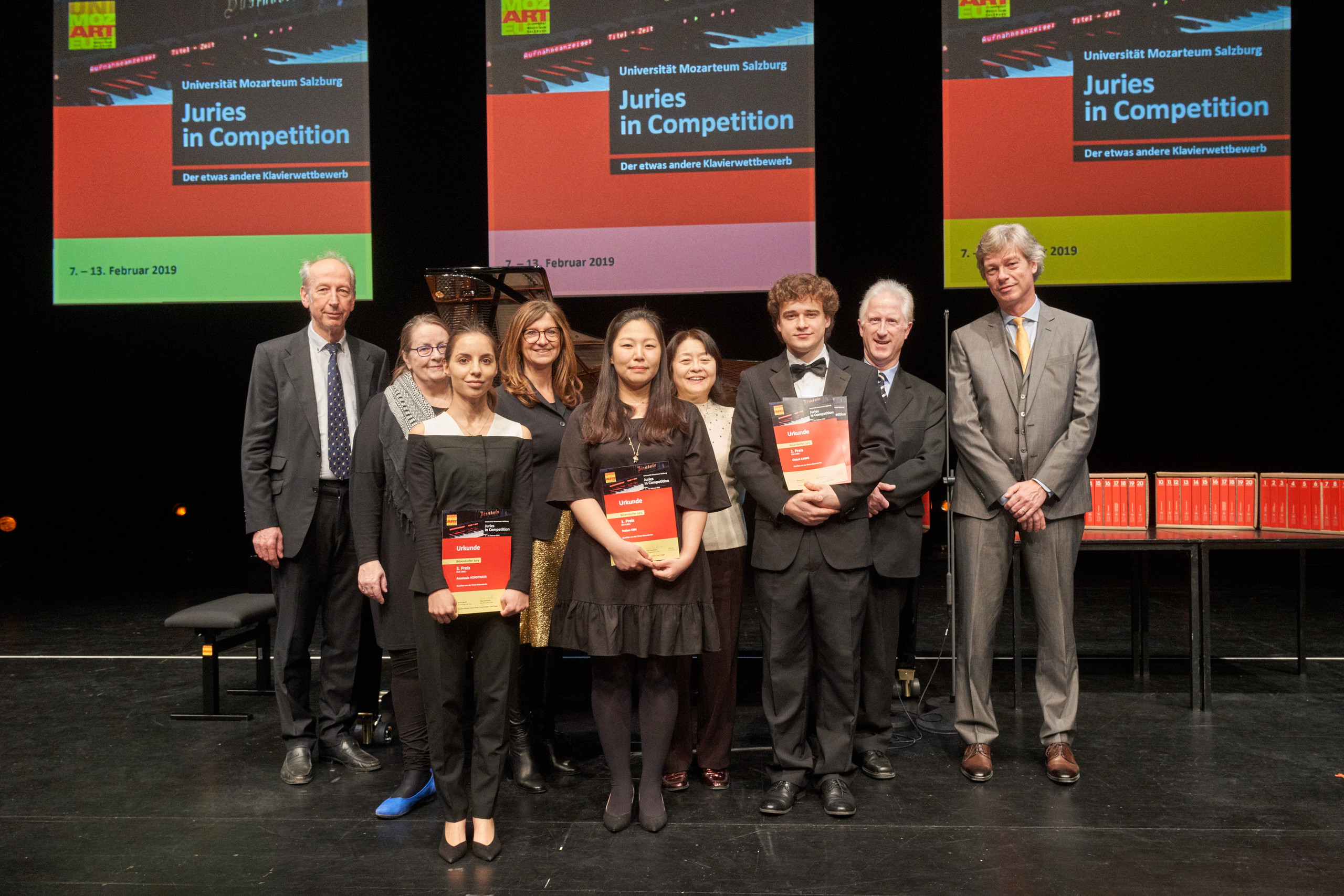A completely new experience for all jury members was not seeing the participants but only hearing them—more or less like sitting in front of a player piano. Jury member Barbara Moser said about the experience, “It’s not that easy to concentrate solely on the music. You get tired more easily, something I really never would have thought of. It’s a fascinating idea in principle, though we need to keep in mind that two pianos never sound exactly the same. There are always differences due to the room’s temperature and acoustics, and for that reason you don’t experience exactly the same concert as when you’re sitting across from the candidate. It’s a good idea in any case, one that can certainly be an additional possibility for facilitating objectivity in the future.”
In the end, seven of around sixty participants made it to the finale. The bulk of the audience listened to the young pianists playing live in Solitaire Hall. The Viennese Hall, where the Bösendorfer grand stood all by itself onstage, was visited rather sparingly. Even more interesting was the atmosphere for visitors who decided to follow the competition in this manner. On the day of the finale, there were mostly no more than five listeners in the Viennese Hall, four of whom were members of the Bösendorfer jury.
One listener, who consciously decided to listen in the Viennese Hall, enthusiastically recounted, “It’s wonderful to experience music in this manner, so unadulterated and pure. It’s a great experience when you consider that we’re listening to a live concert here that’s taking place in another building. That’s the future.”
